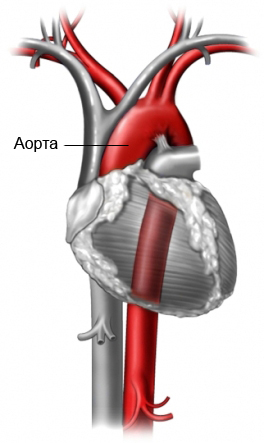Aortic dissection
Description of the stratification of the aorta
Aortic dissection occurs, When the layers are separated by. The aorta is the main artery, coming from the heart. Arterial wall has three layers. The gap of the inner layer allows blood seep between the middle and outer layers. If you bundle is all three layers of the aorta, This causes heavy bleeding. This process can also block the main channel, and the blood cannot pass on to internal organs.
This is a life-threatening event, because it can cause a stroke, sudden heart failure, or death due to the breakdown of the blood flow to vital organs. When you bundle the wrong blood can also threaten neighbouring authorities, such as the respiratory tract, lungs, or heart.

Causes of aortic bundle
High blood pressure and aortic disease (atherosclerosis) are the main causes of stratification. Other congenital and acquired disorders of the aorta, that may increase the chance of stratification:
- Hypertension;
- Injuries to the chest, or the result of a botched operation;
- Hereditary connective tissue disorders (eg, Ehlers-Danlos Syndrome, Marfan syndrome);
- Late pregnancy;
- Tertiary;
- Smoking;
- Hyperlipidemia.
Risk factors
Factors, that increase the likelihood of a bundle of aorta:
- Arterial hypertension;
- Atherosclerosis;
- Chest injury, eg, After a car accident;
- Inheritance breach of connective tissue;
- At the final stage of pregnancy;
- Untreated syphilis.
The symptoms of aortic bundle
The following symptoms may be caused not only by the emergence of the aorta, and other serious illnesses. When you see any of them need to go to the doctor. These symptoms are most common, but there are many other possible symptoms, because the aorta supplies blood to every organ in the body, except for the light.
- Sudden, severe chest pain and/or in the back;
- Stroke;
- Fainting;
- Breathlessness;
- Sudden weakness.
Diagnostics bundles of aorta
Usually in case of detection of stratification of the aorta, the patient is sent immediately to the hospital. The doctor asks about the symptoms and medical history, performs a physical examination, and then assigns the tests as soon as possible.
Tests may include the following:
- Chest X-ray – test, who uses x-ray radiation, to take a picture of structures inside the body;
- Echocardiogram – test, which uses high-frequency sound waves (ultrasound), to examine the size, shape and motion of the heart;
- CT scan (CT) – type of X-ray inspection, wherein the computer is used, to make pictures of structures inside the chest;
- MRT – test, which uses magnetic waves, to make pictures of structures inside the body;
- Aortography – after, How to x-ray dye is injected through the catheter into the aorta, runs the x-ray of a blood vessel.
Treatment of aortic bundle
Patient, probably, will be placed in the NICU (OBE) to stabilize and further examination. Will control blood pressure, and the patient is under the supervision of.
One type of bundle aorta requires immediate surgery. The second form of bundle you can often get by without surgery (If there is no blockage of blood vessels). It depends, where in the aorta occurs bundle. Sixty percent of patients, Aortic rassloenijam patients live more 10 years after the discovery of the disease. Treatment options include the following:
Surgery
The chest is opened, and aorta operated. A transplant from Dacron (the so-called stent), can be used to replace damaged segments of the aorta. This operation is performed in the most urgent cases.
Non-surgical treatment
Blood pressure is minimized, to reduce the load on the aorta. The patient may undergo study every 6-12 months to identify further stratification.
Prevention of stratification of the aorta
To reduce the chance of stratification of the aorta, you must take the following steps:
- Track and monitor blood pressure;
- Ask a doctor appoint survey, If there are risk factors for aortic bundle;
- You must keep under control giperlipidemiju through diet and/or medication.
